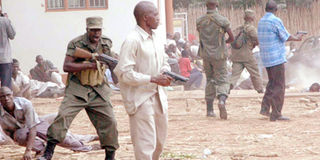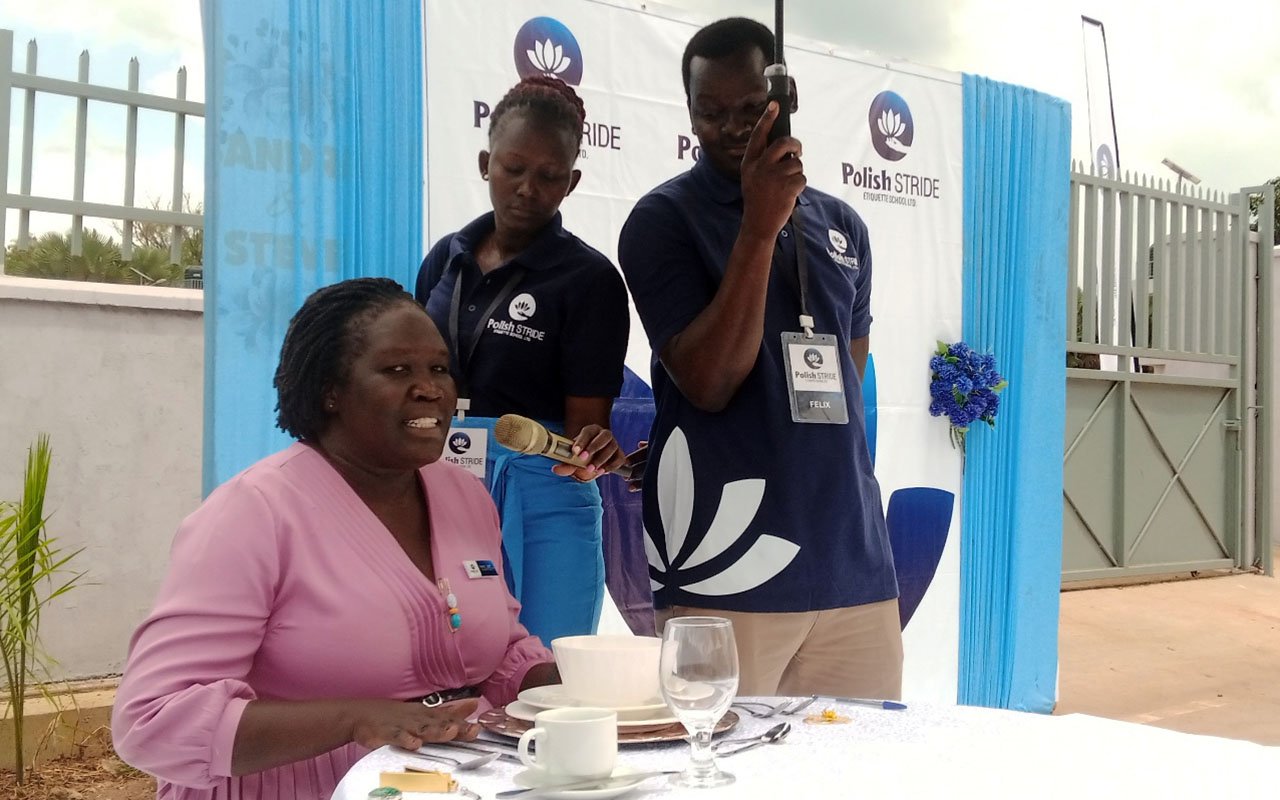Prime
Kyanjo’s vivid testimony sheds more light on Kasubi shooting

PERPETRATORS? Mr Kyanjo produced these pictures before the commission showing armed security personnel yesterday suspected of the shooting.
What you need to know:
MP Hussein Kyanjo presented before the commission pictures of armed security personnel who are suspected to be behind the shootings that left three people dead.
Kampala
Ten months since an inferno burnt Kasubi Royal Tombs to ash, an incident that also saw three Baganda loyalties shot dead, yet the identities of those behind the bloody violence and the people who torched the tombs are yet to be revealed.
The commanders of security forces who have appeared before the commission of Inquiry into the burning of the royal tombs and subsequent shooting have all feigned ignorance of the perpetrators. This week, however, the commission received pictures of some of the security operatives at the scene, some in plainclothes, who are believed to have participated in the shooting of civilians at the world heritage site.
Kyanjo’s testimony
Makindye West MP, Hussein Kyanjo, while appearing before the commission chaired by Justice George Engwau, produced the photographs of the security operatives who were shooting as part of the evidence in the bloody violence that ensued. “We were about 10 MPs who were entering the Kasubi tombs when we started hearing gunshots from inside. At this time, there was a lot of confusion, some people running towards me while others running a way,” Mr Kyanjo told the commission. “The people shooting were in two forms, some were in plain green military attire and others were in civilian clothing.”
Mr Kyajo’s testimony was more vivid than that given by several commanders of the security forces who claimed they did not know the people who were behind the shooting. As expected, the security heads are not happy about MP Kyanjo’s riveting revelations.
Many of the armed Forces witnesses who have testified before the commission said they only heard gunshots. “I think a competent team was set up to investigate those who were shooting. But personally, I did not see as I would have made arrests,” Mr Andrew Sorowen, Kampala Metropolitan Police Commander, said before the commission.
Deputy CID director Moses Sakira, who happened to be inside the premises during the shooting, also said he did not see anybody shooting--although like his counterparts, he said he heard gunshots. “At the time of shooting, I was in one of the houses in the tombs carrying out my investigations,” Mr Sakira said. “Later, I saw people running towards the gate as I crawled slowly. Moving out (of the house), I saw a soldier near the fence with a gun.”
Mr Simon Birungi, one of the bullet survivors, told the commission that although he does not remember exactly who shot him, he recalls that one of those who were shooting was wearing an army uniform. Mr Sakira, however, admitted not having immediately carried out an investigation into the shooting despite being at the scene. He said he instructed Mr Patrick Wacha of the homicide division to investigate the cause of the fire and not the shooters at the time.
“These weapons (guns) are handled by individuals and these individuals take responsibility for them. If there was any shooting, then it happened where I wasn’t,” Lt. Col. Michael Kabango, the commandant of the Military Police, said. He added: “No military police fired any bullet basing on the audit we did for accountability.” He said during the shooting incident, he and other military officers were outside the premises that house Kasubi tombs although they later moved in.
Despite of being shown television footage of the person in a blue shirt believed to have shot at the crowd, Lt. Col. Kabango said he was not the perpetrator. He also denied having seen anybody with a pistol at the site though such clearly shown on the footage.
Lt. Col. Kabango said there were a number of security forces at the site including Chief of Military intelligence, the Anti-riot police, Special Forces Group and others without uniforms but none of those outfits shot. “I could be lying if I could tell you that I know who shot (at the people),” Lt. Col. Kabango said, adding that while commanding his forces, he ordered them not to shoot even though the angry crowd was pelting them with stones.
Asked why the military was involved at the site yet there was no external aggression, Lt. Col. Kabango said they were called in to assist the regular police who had been overpowered by civilians at the site. He said all forces in the country are entitled to cooperate and work together in case of any problem.
CID boss Edward Ochom admitted the investigations were not well conducted and added that the homicide case could have been handled by Old Kampala Police Station. “I think not much was done in the case because constantly we could have had progress reports like other cases which we have (previously) handled,” Mr Ochom said.
With so many contradictions, the question has remained whether police is simply plying tricks to cover up the perpetrators of Kasubi killings. “There was police with the highest number of personel at the scene. They heard the gunshots and people died in the process but they did not know who shot them. Which kind of police is this?” Justice Engwau asked. “Can we conclude that Uganda police is incompetent?” Justice Engwau said it was unfortunate that the police does not know the shooter or shooters, ten months since the burning of Kasubi tombs.
Neither the Inspector General of Police Maj. Gen. Kale Kayihura nor the police spokesperson Judith Nabakoba was available for comment as they were reportedly in a security meeting. Saturday Monitor has reproduced some of the pictures of the security officers wielding guns and in shooting positions so that the public can help the commission to identify them to help in further investigations.




